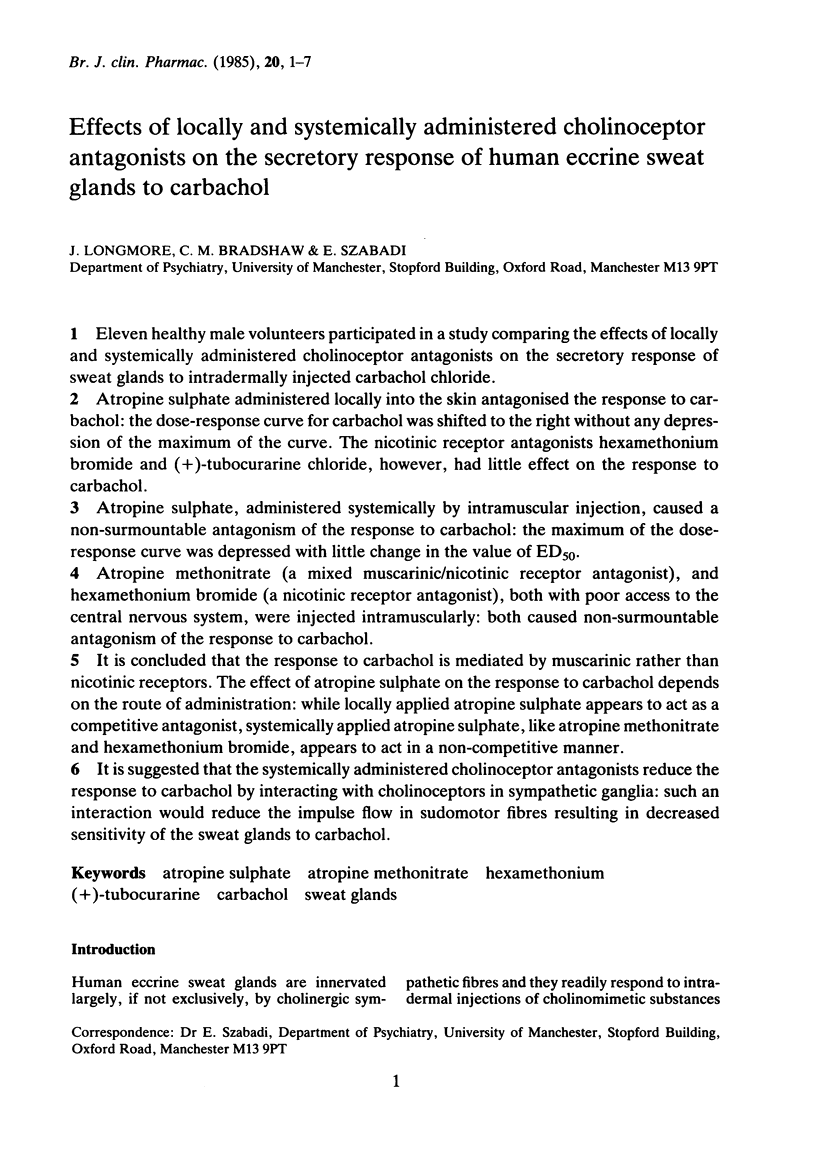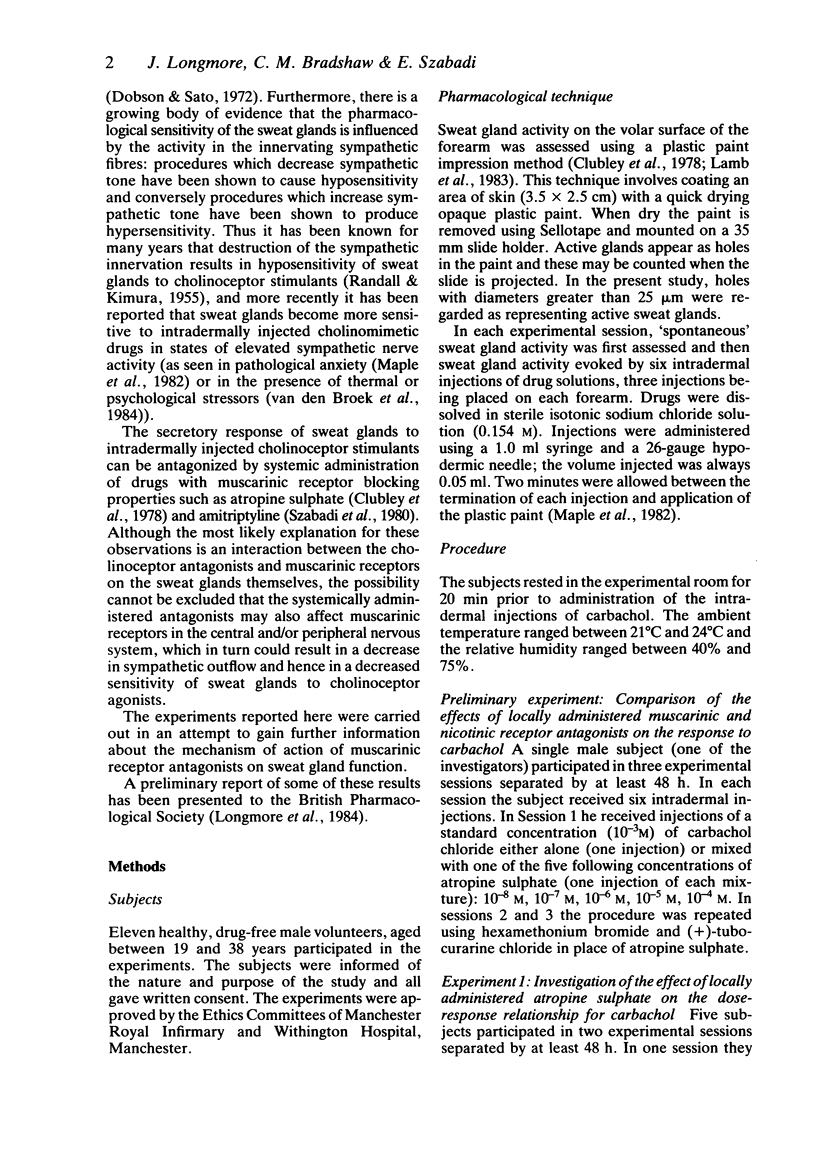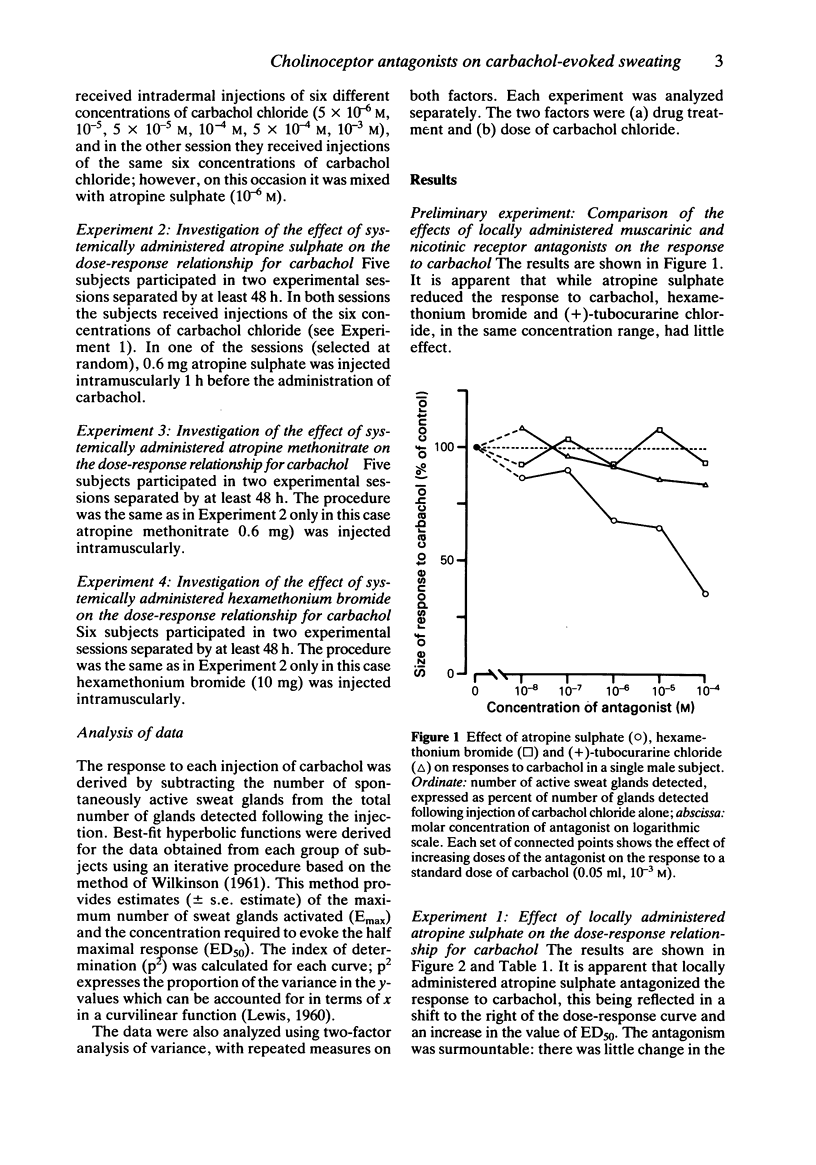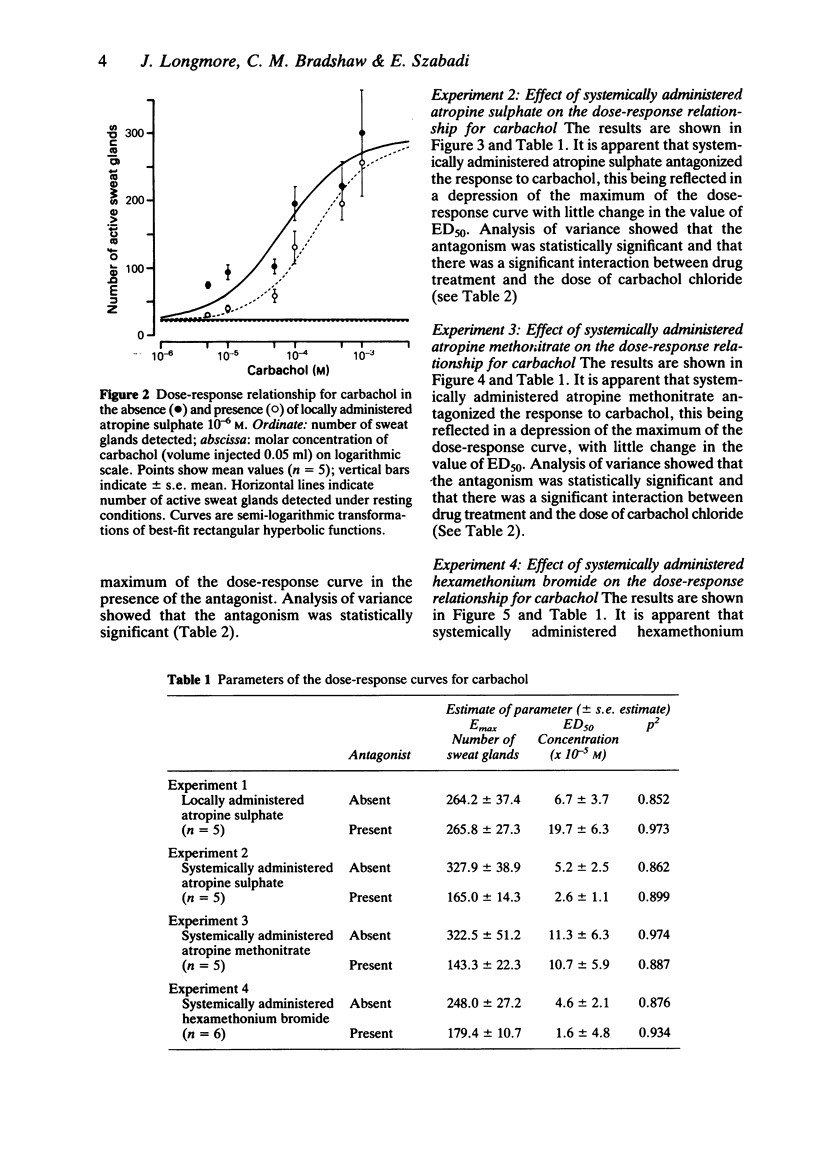Abstract
Eleven healthy male volunteers participated in a study comparing the effects of locally and systemically administered cholinoceptor antagonists on the secretory response of sweat glands to intradermally injected carbachol chloride. Atropine sulphate administered locally into the skin antagonised the response to carbachol: the dose-response curve for carbachol was shifted to the right without any depression of the maximum of the curve. The nicotinic receptor antagonists hexamethonium bromide and (+)-tubocurarine chloride, however, had little effect on the response to carbachol. Atropine sulphate, administered systemically by intramuscular injection, caused a non-surmountable antagonism of the response to carbachol: the maximum of the dose-response curve was depressed with little change in the value of ED50. Atropine methonitrate (a mixed muscarinic/nicotinic receptor antagonist), and hexamethonium bromide (a nicotinic receptor antagonist), both with poor access to the central nervous system, were injected intramuscularly: both caused non-surmountable antagonism of the response to carbachol. It is concluded that the response to carbachol is mediated by muscarinic rather than nicotinic receptors. The effect of atropine sulphate on the response to carbachol depends on the route of administration: while locally applied atropine sulphate appears to act as a competitive antagonist, systemically applied atropine sulphate, like atropine methonitrate and hexamethonium bromide, appears to act in a non-competitive manner. It is suggested that the systemically administered cholinoceptor antagonists reduce the response to carbachol by interacting with cholinoceptors in sympathetic ganglia: such an interaction would reduce the impulse flow in sudomotor fibres resulting in decreased sensitivity of the sweat glands to carbachol.
Full text
PDF






Selected References
These references are in PubMed. This may not be the complete list of references from this article.
- Clubley M., Bye C. E., Henson T., Peck A. W., Riddington C. A technique for studying the effects of drugs on human sweat gland activity. Eur J Clin Pharmacol. 1978 Nov 27;14(3):221–226. doi: 10.1007/BF02089963. [DOI] [PubMed] [Google Scholar]
- Dobson R. L., Sato K. The stimulation of eccrine sweating by pharmacologic agents. Adv Biol Skin. 1972;12:447–475. [PubMed] [Google Scholar]
- GYERMEK L., NADOR K. The pharmacology of tropane compounds in relation to their steric structure. J Pharm Pharmacol. 1957 Apr;9(4):209–229. doi: 10.1111/j.2042-7158.1957.tb12275.x. [DOI] [PubMed] [Google Scholar]
- Inch T. D., Brimblecombe R. W. Antiacetylcholine drugs: chemistry, stereochemistry, and pharmacology. Int Rev Neurobiol. 1974;16(0):67–144. doi: 10.1016/s0074-7742(08)60195-6. [DOI] [PubMed] [Google Scholar]
- Lamb K., Bradshaw C. M., Szabadi E. The responsiveness of human eccrine sweat glands to choline and carbachol. Application to the study of peripheral cholinergic functioning in Alzheimer-type dementia. Eur J Clin Pharmacol. 1983;24(1):55–62. doi: 10.1007/BF00613927. [DOI] [PubMed] [Google Scholar]
- Maple S., Bradshaw C. M., Szabadi E. Pharmacological responsiveness of sweat glands in anxious patients and healthy volunteers. Br J Psychiatry. 1982 Aug;141:154–161. doi: 10.1192/bjp.141.2.154. [DOI] [PubMed] [Google Scholar]
- RANDALL W. C., KIMURA K. K. The pharmacology of sweating. Pharmacol Rev. 1955 Sep;7(3):365–397. [PubMed] [Google Scholar]
- Szabadi E., Gaszner P., Bradshaw C. M. The peripheral anticholinergic activity of tricyclic antidepressants: comparison of amitriptyline and desipramine in human volunteers. Br J Psychiatry. 1980 Nov;137:433–439. doi: 10.1192/bjp.137.5.433. [DOI] [PubMed] [Google Scholar]
- Volle R. L., Hancock J. C. Transmission in sympathetic ganglia. Fed Proc. 1970 Nov-Dec;29(6):1913–1918. [PubMed] [Google Scholar]
- WILKINSON G. N. Statistical estimations in enzyme kinetics. Biochem J. 1961 Aug;80:324–332. doi: 10.1042/bj0800324. [DOI] [PMC free article] [PubMed] [Google Scholar]
- van den Broek M. D., Bradshaw C. M., Szabadi E. The effects of a psychological "stressor" and raised ambient temperature on the pharmacological responsiveness of human eccrine sweat glands: implications for sweat gland hyper-responsiveness in anxiety states. Eur J Clin Pharmacol. 1984;26(2):209–213. doi: 10.1007/BF00630287. [DOI] [PubMed] [Google Scholar]


